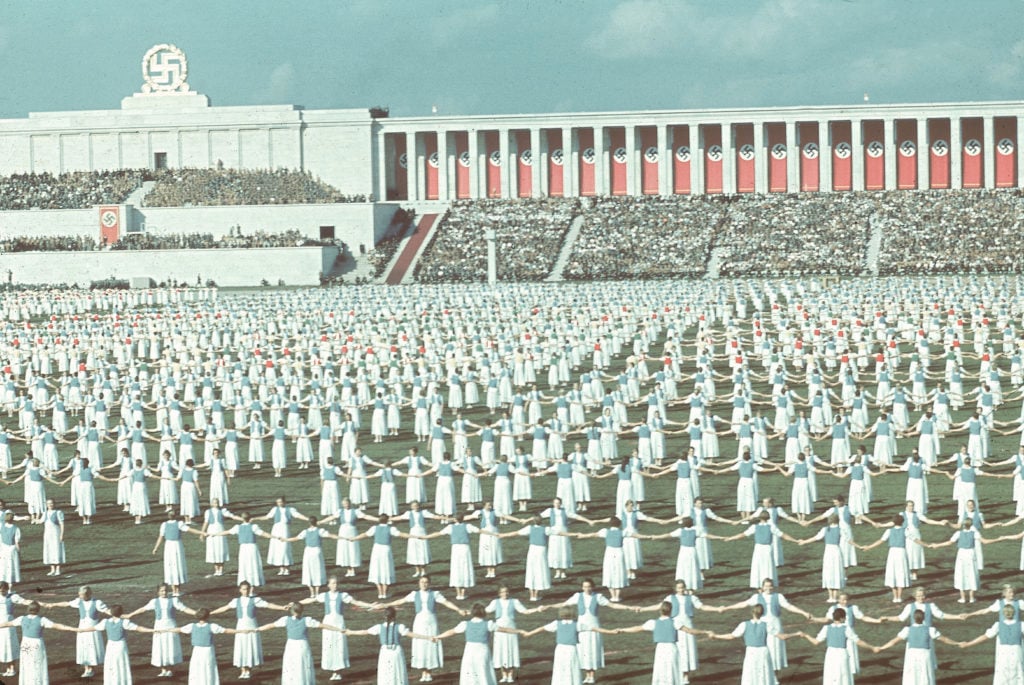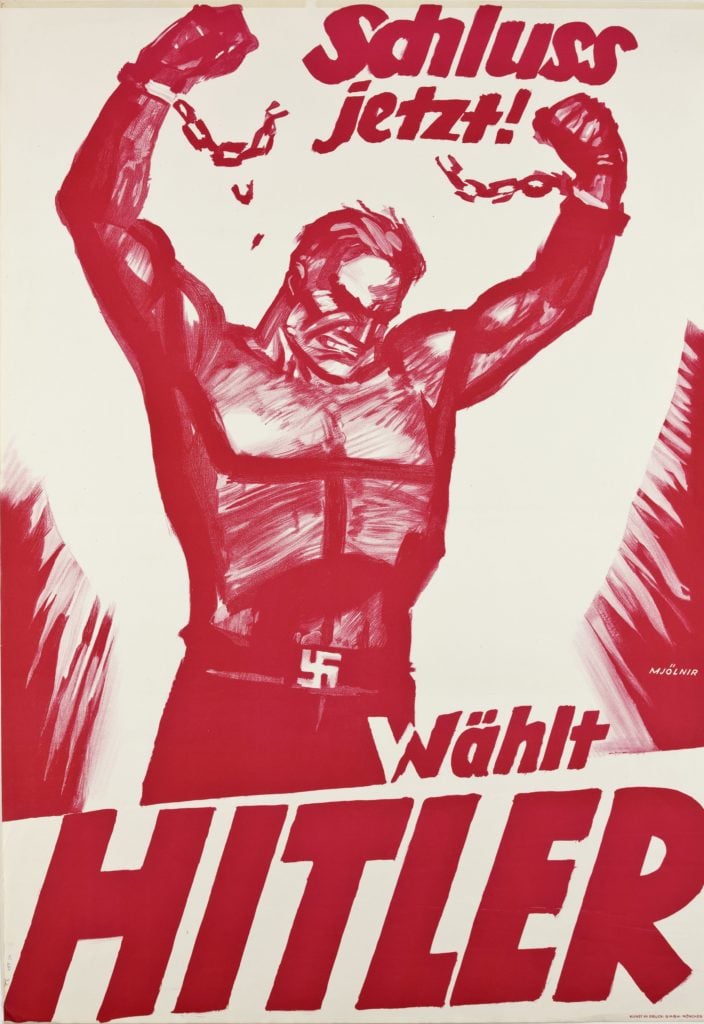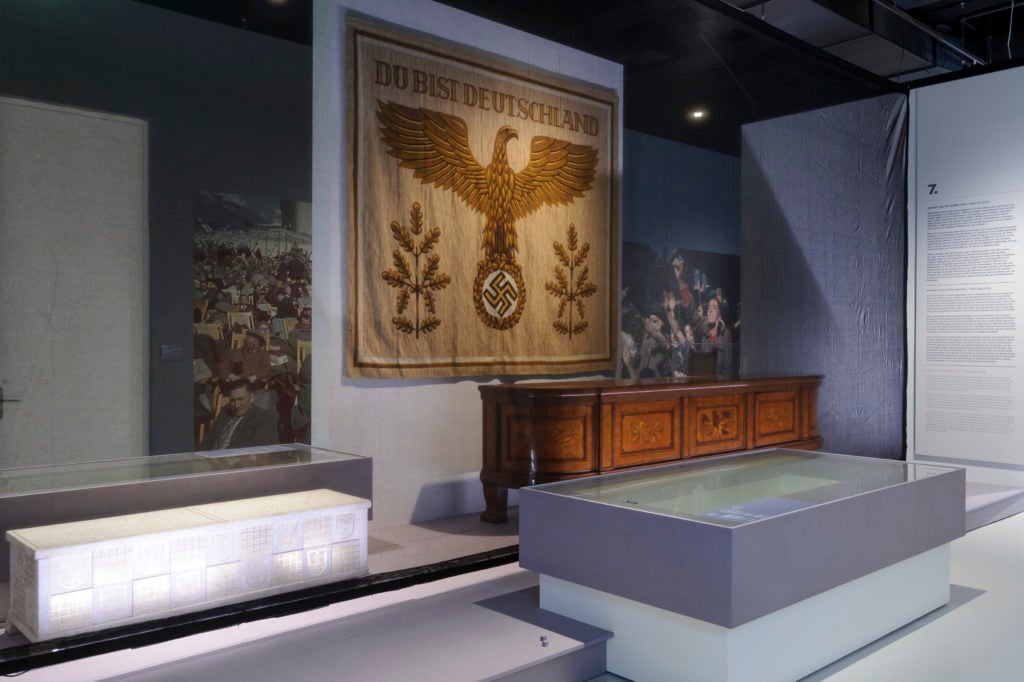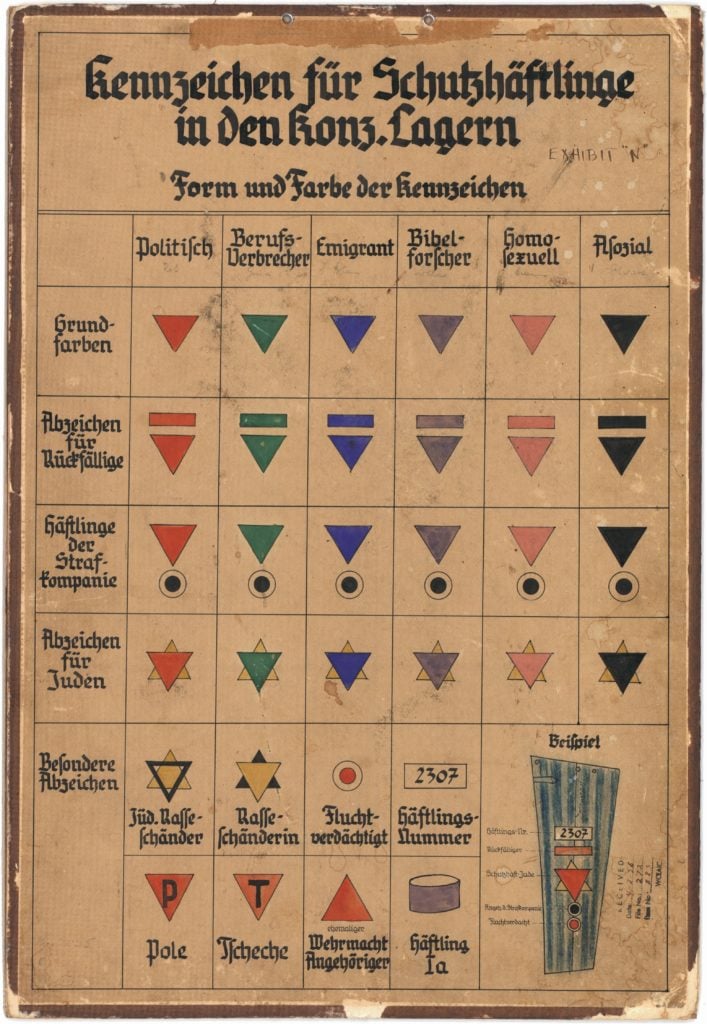Opinion
Our Exhibition on Nazi Design in the Netherlands Has Been Controversial. Here’s Why We Did It—and Why It’s More Urgent Now Than Ever
Timo de Rijk, the director of the Design Museum Den Bosch, defends his institution's divisive exhibition.

Timo de Rijk, the director of the Design Museum Den Bosch, defends his institution's divisive exhibition.

Timo de Rijk

On September 7, we opened the exhibition “Design of the Third Reich” at Design Museum Den Bosch, in the south of the Netherlands. We fully recognized that the design culture of National Socialism was a delicate theme for an exhibition and that this was likely to be reflected in the response. All the same, the reaction when it came was perhaps a little stronger and more intense even than we had anticipated.
The Dutch press published good preliminary reviews, and we also caught the eye of the international papers. The media in Germany responded cautiously and with a touch of confusion. A few weeks in and all the online tickets for the exhibition have been sold. The negative voices have been small in number, but they have been fierce and tenacious.
Preparations for the exhibition began in earnest about two years ago, when we signed a cooperation agreement with guest curator Almar Seinen, and later, Tomas van den Heuvel, after first notifying and discussing the plan with our supervisory board and the Alderman for Culture for our local municipality, ’s-Hertogenbosch. We announced the exhibition via a chance interview with the Dutch progressive newspaper De Volkskrant. That same evening, the eight o’clock news on Dutch television included a report on our plan. The run-up to the exhibition gave us a foretaste of what was to come: Numerous conversations, from all manner of parties with an interest in the subject, accompanied by more or less continuous press attention, whether or not informed from our side.

Election poster NSDAP, 1932. (Münchner Stadtmuseum, Sammlung Reklamekunst)
There was a recurring question raised by many journalists: Why stage an exhibition about the Third Reich? A lot of people in the museum sector also felt ambushed by the theme. They were all aware of it, but virtually no one had allowed themselves to consider that such an important period in the 20th century deserved a place in a cultural museum.
In the academic world, in which I worked for many years as a professor of design history, the art and design of totalitarian regimes is an established field of research, making it hard to understand why an exhibition on the subject would be questioned. It was this view, in the first instance, that led us to propose “Design of the Third Reich” as an important and even necessary theme. Necessary because the museum is still primarily a public space in which history can be displayed and understood in all its facets. And because the systematic absence of one of the most important periods of the 20th century makes it impossible to achieve a balanced analysis of our own time.
The cultural expressions of National Socialism become highly controversial, however, as soon as they are shifted to the public sphere of the museum. That is less the case in museums of history, of course, where the art and propaganda of the Third Reich have been explored on previous occasions. The compelling exhibition “Kunst und Macht im Europa der Diktatoren 1930 bis 1945,” held at the Deutsches Historisches Museum in Berlin in 1996, is a fine example. This exhibition at a major history museum displayed Nazi art among that of other totalitarian regimes, and comparative and educational elements were called on at the time to justify such an exhibition.

Installation view, “Design of the Third Reich.”
The first controversy concerning our exhibition “Design of the Third Reich” arose following the announcement that we intended to focus solely on the culture of Nazi Germany and that we would do so at a museum with a cultural function. The public consistently expects the collections and exhibitions of art museums to maintain an ethically positive approach. The constantly repeated idea that art represents the good and the beautiful has been bolstered more recently by the notion that art has a civilizing effect and brings people together. This was very much in evidence, incidentally, at the ICOM General Conference held just a couple of weeks ago in Kyoto, which sought to formulate a new definition of museum inclusivity.
It goes without saying that the stance we have adopted in our exhibition is a critical one. Our position is that design made an essential contribution to the rise of National Socialism in Germany. This required us to present a precise account of the racist character of National Socialism.
The exhibition thus begins with an explanation of the link between the racially pure Nazi ideal and the “design” of the “new man” and his environment. It was clear to us from the start that this had to be a proper design exhibition in which we set out to show and to explain design in all its forms, right through to the shaping of the landscape. We wished to highlight the Nazis’ immense interest in the aesthetics of the presentation of their party, state, and ideology, with Adolf Hitler as the key instigator.
At the same time, the National Socialists viewed architecture and the decorative arts as important expressions of a new cultural high point in German history. Alongside forms of design like this, which were intended to seduce the public, there were, of course, the openly evil forms associated with the SS and anti-Semitism. The story told by the exhibition culminates in the visual communication of total war and the designs for the gas chambers at Auschwitz.

Symbol chart for prisoners in protective custody, 1937. (ITS Archive, Arolsen Archives)
To avoid the pitfall of glamorizing Third Reich design, we opted to give the exhibition a documentary-like character. This does not mean that we are presenting a historical exhibition with just a few aesthetic objects, but that we use design to tell the key elements of the story. The documentary approach ultimately enabled us to show and to explain Nazi aesthetics, without allowing them to influence the design of the exhibition itself.
Studio Pronk from Rotterdam developed a sober scenography with clear, non-dramatic lighting (insofar as the loaned items allowed this) and in which swastika flags, for instance, are laid flat. We were determined not to facilitate the seductive intentions of some of the exhibits. To properly explain the malevolent character of Nazism and the way design was frequently deployed to reinforce that ideology, we present an introductory film in the first exhibition space. Visitors are then provided with an incisive audio tour (free of charge), which further explains the exhibition. It is striking to see how intensely people respond to the film and what grateful use they make of the audio tour.
While criticism was expected, some of it has emanated from unexpected quarters. The response when we first announced the exhibition was that the choice of subject alone meant that we would, by definition, be insufficiently able to reject National Socialist culture. According to these critics, any attention that an art museum pays to Nazi culture inevitably makes that culture more acceptable—a normalization which can never be reversed.
These reactions came at first from a small anti-fascist movement, followed by young communists and socialist artists, mostly in advance of or without having seen the exhibition. Oddly enough, similar criticism was then published in the populist press, including Bild in Germany and De Telegraaf in the Netherlands.
We have argued from the outset that we consider National Socialist cultural attitudes to be evil, but an essential part of the 20th century. Failure to show and to analyze them amounts to nothing less than a desire to forget history: an omission that risks making fascism actually seem mysterious and attractive.
We were fully aware that a focus on Nazi culture would generate confusion, due in particular to the prevailing expectations toward the contemporary art museum. For that reason, we hope that a design museum like ours will be able to create expectations comparable to those held towards museums of history and technology.
To us, Design Museum Den Bosch represents a new generation of design museums, which no longer simply collect good design as an example to future designers, but which also want to consider design critically in its historical and contemporary context.
Timo de Rijk is director of the Design Museum Den Bosch in the Netherlands. The exhibition “Design of the Third Reich” is on view at the Design Museum Den Bosch in the Netherlands through January 19, 2020.